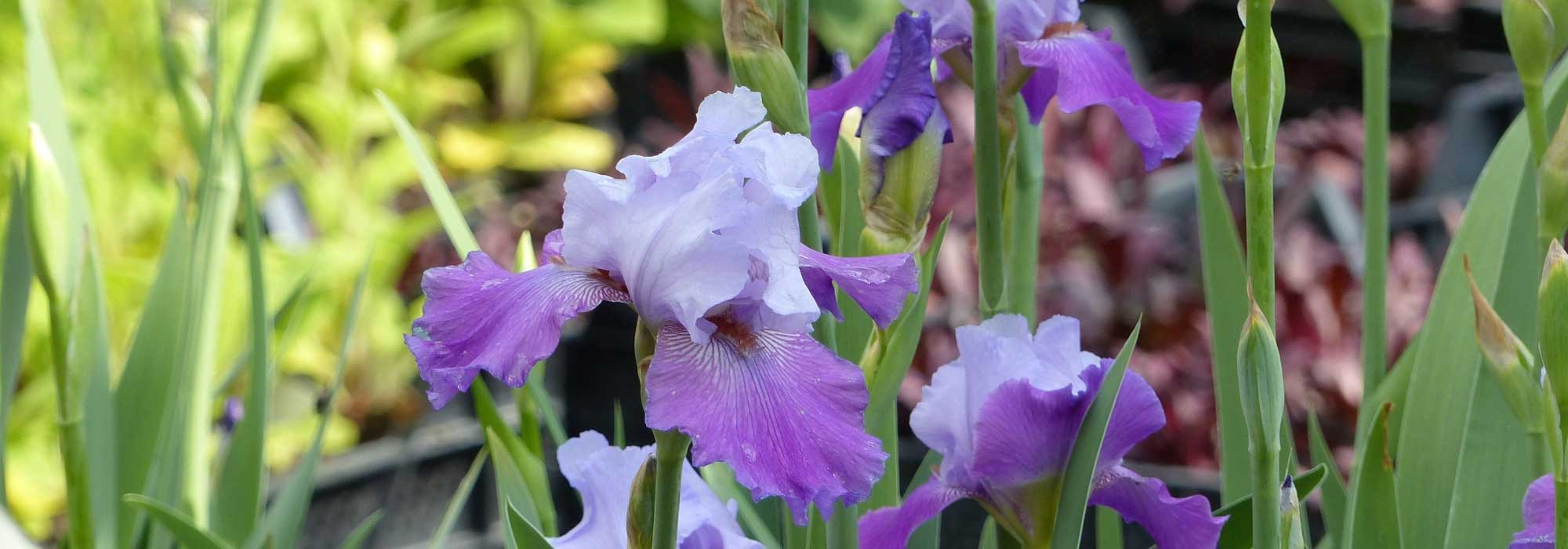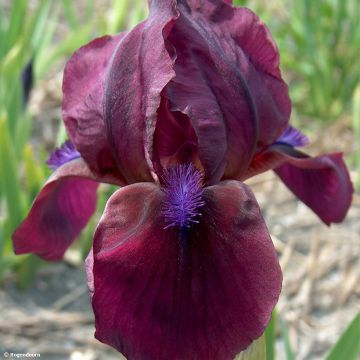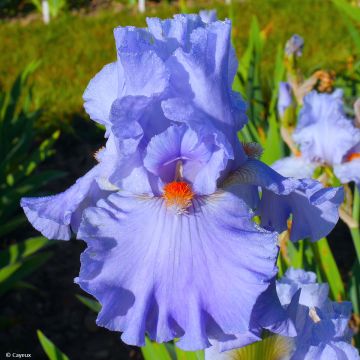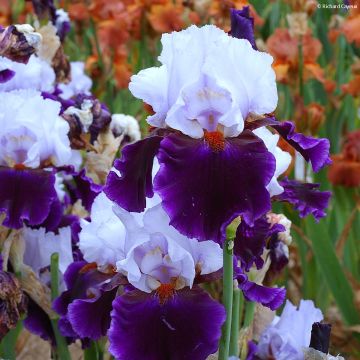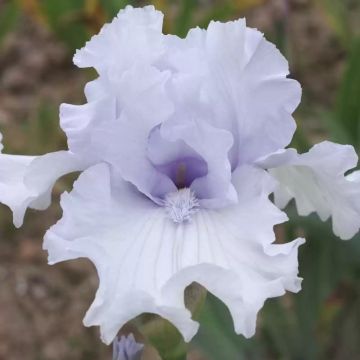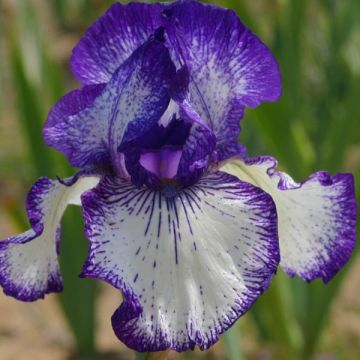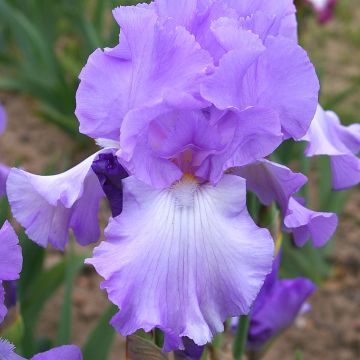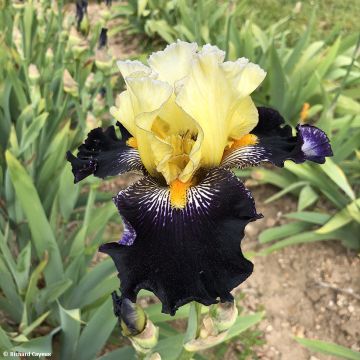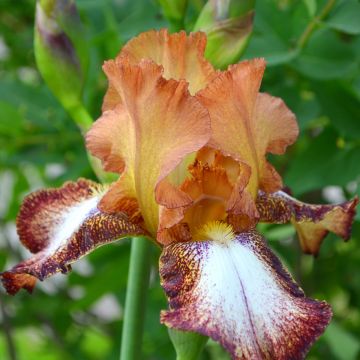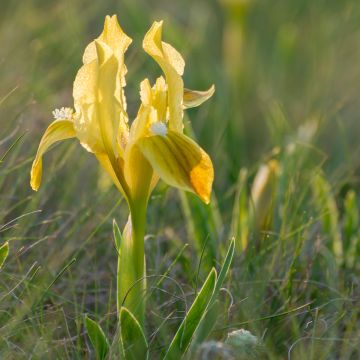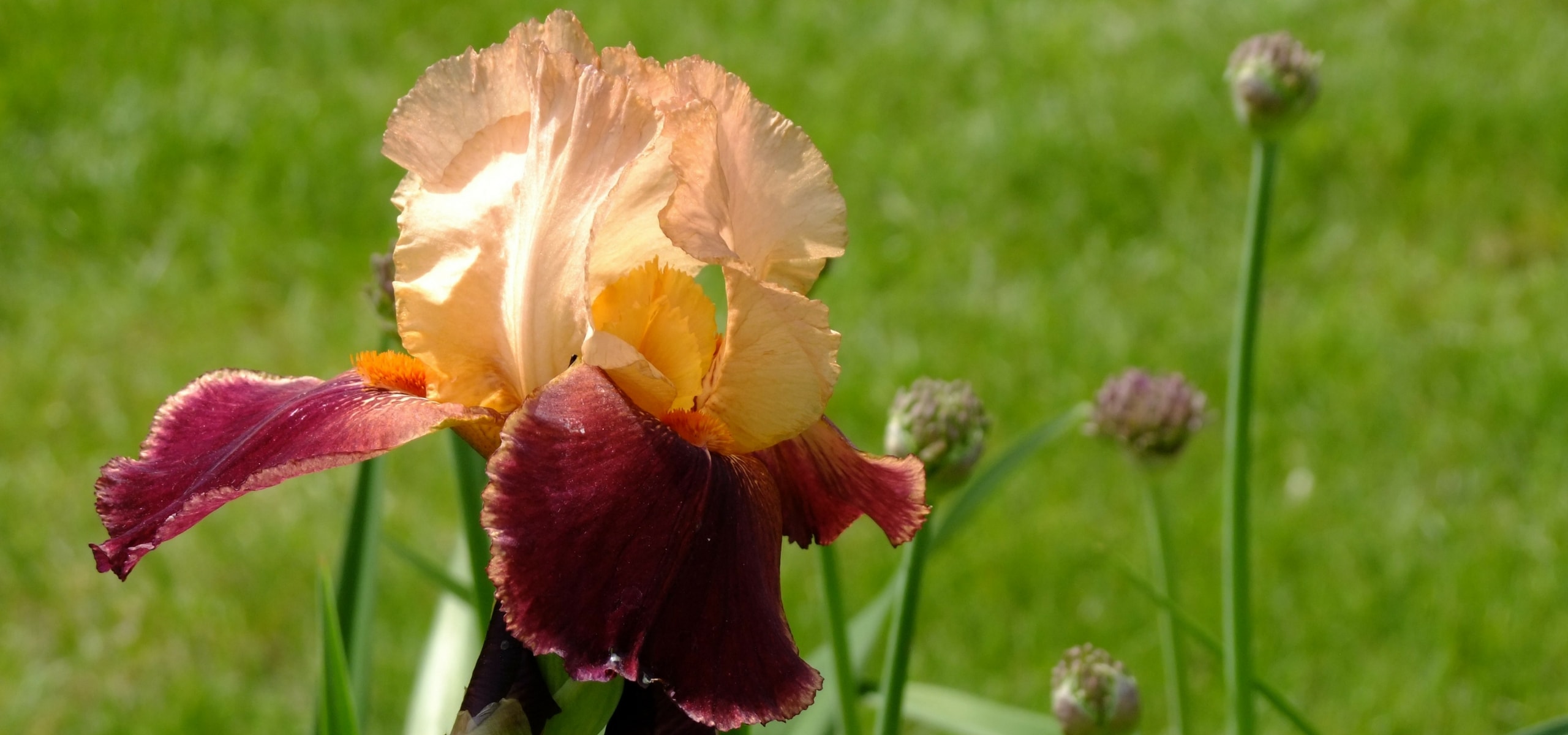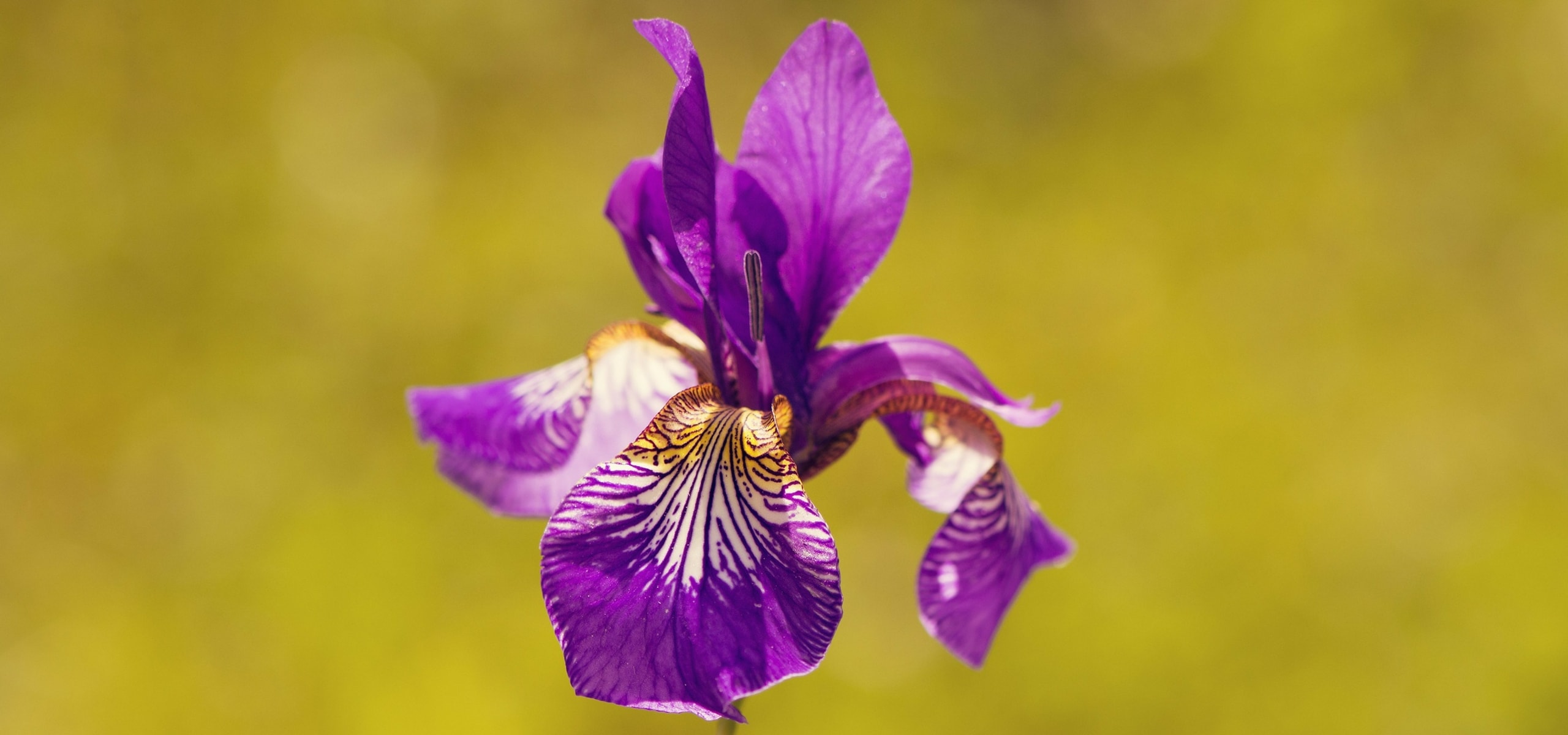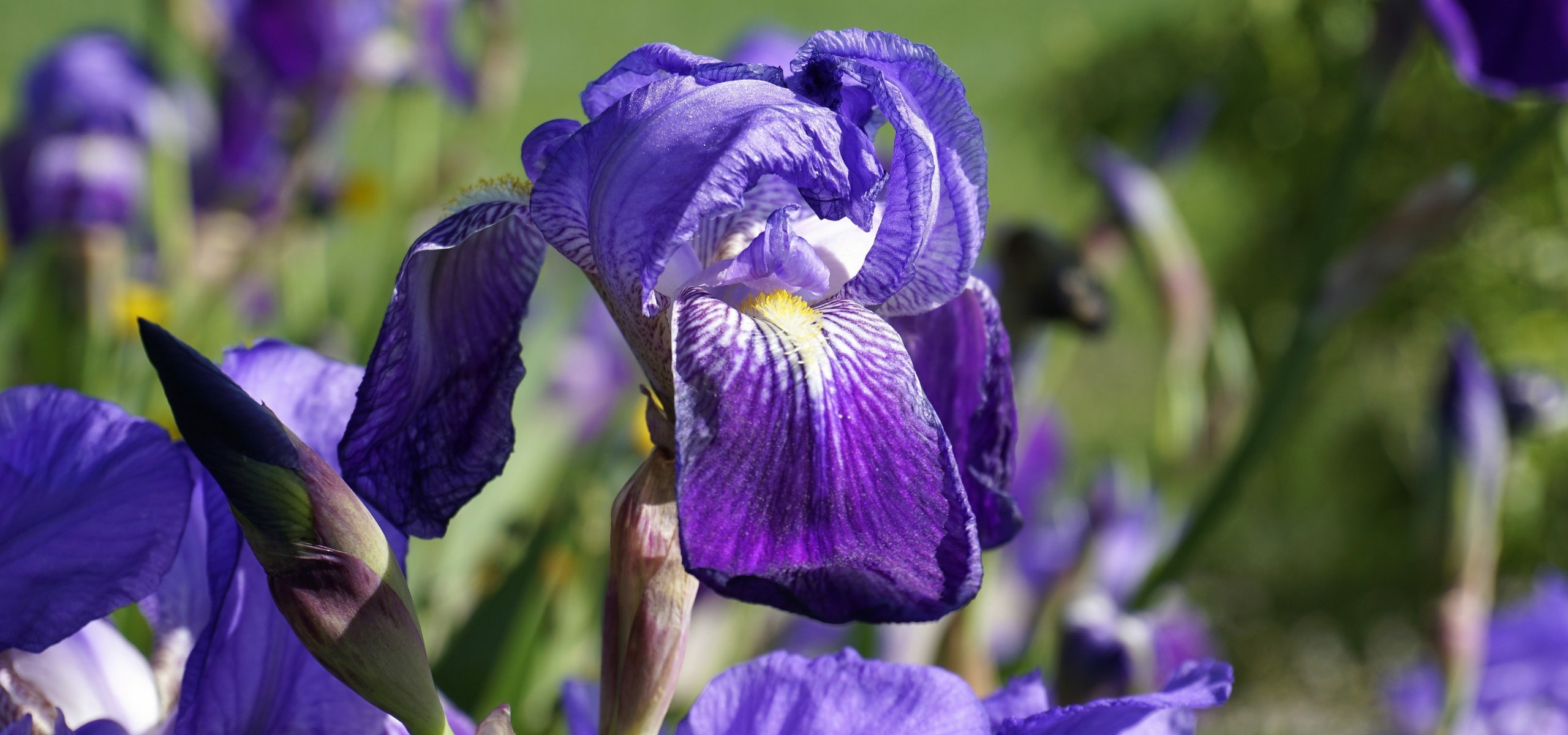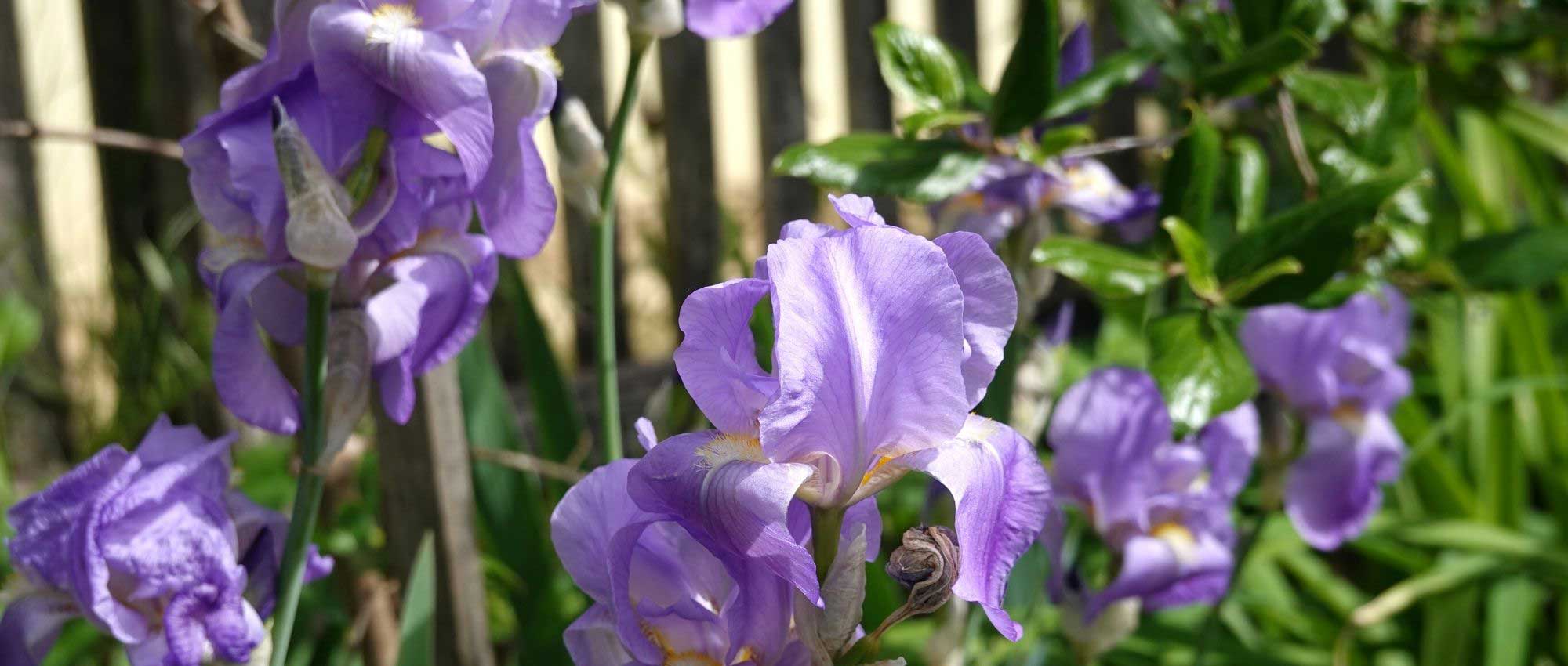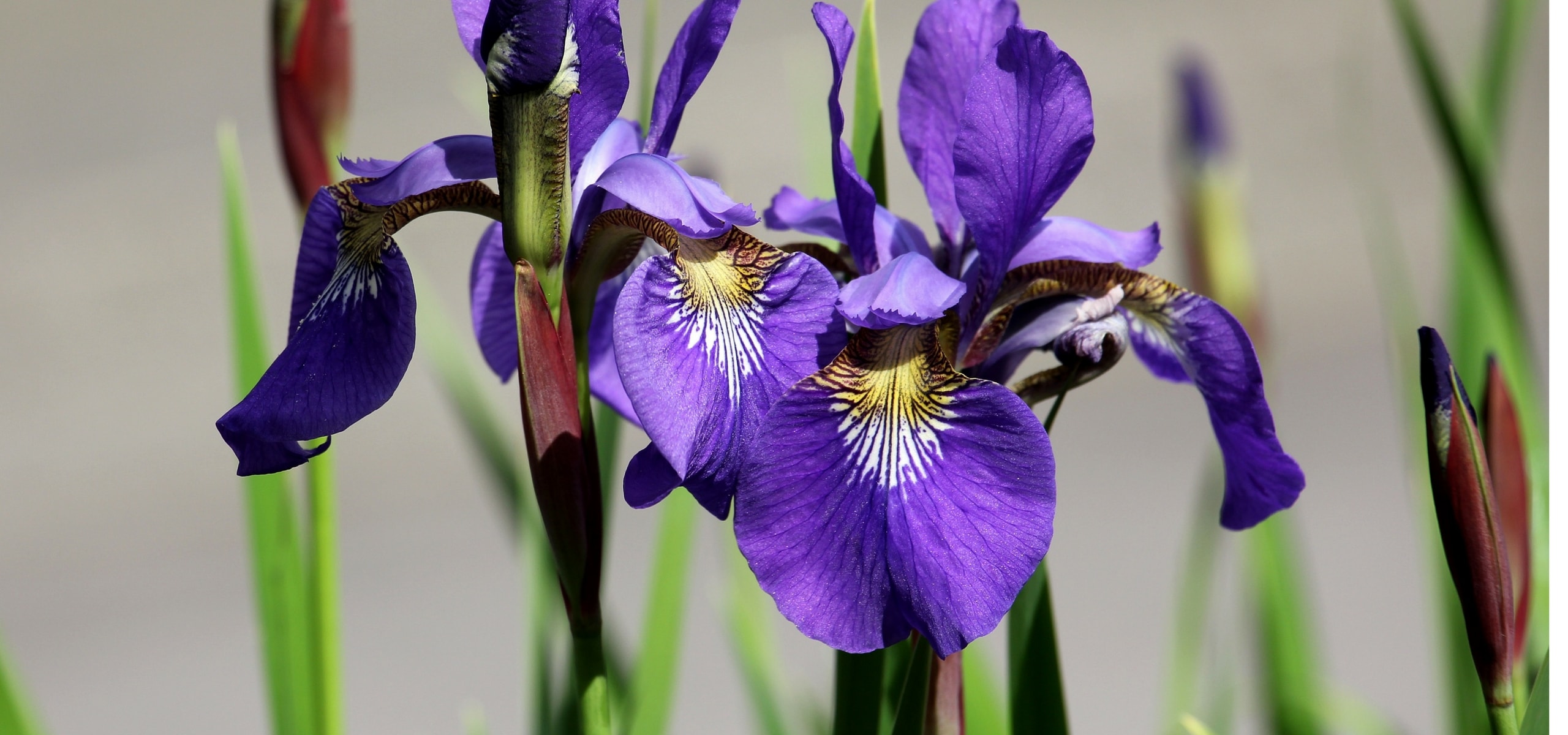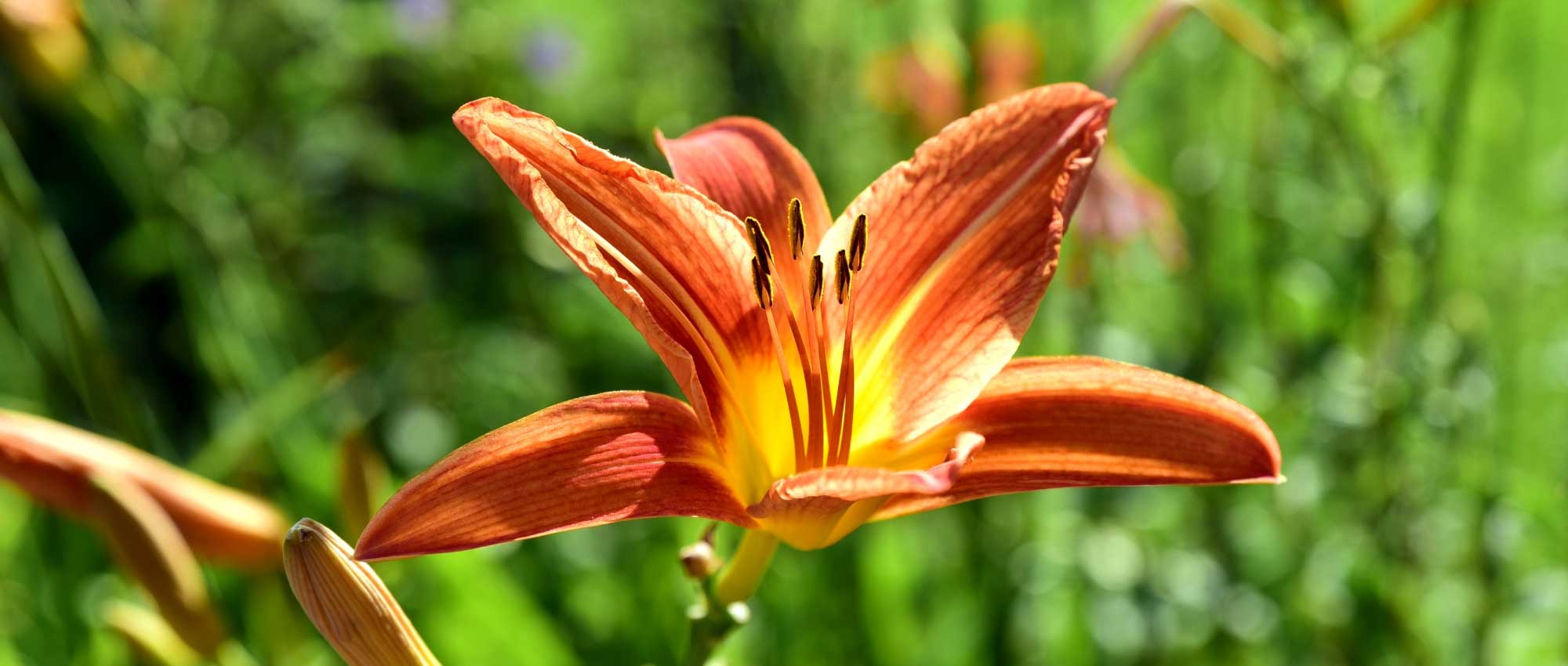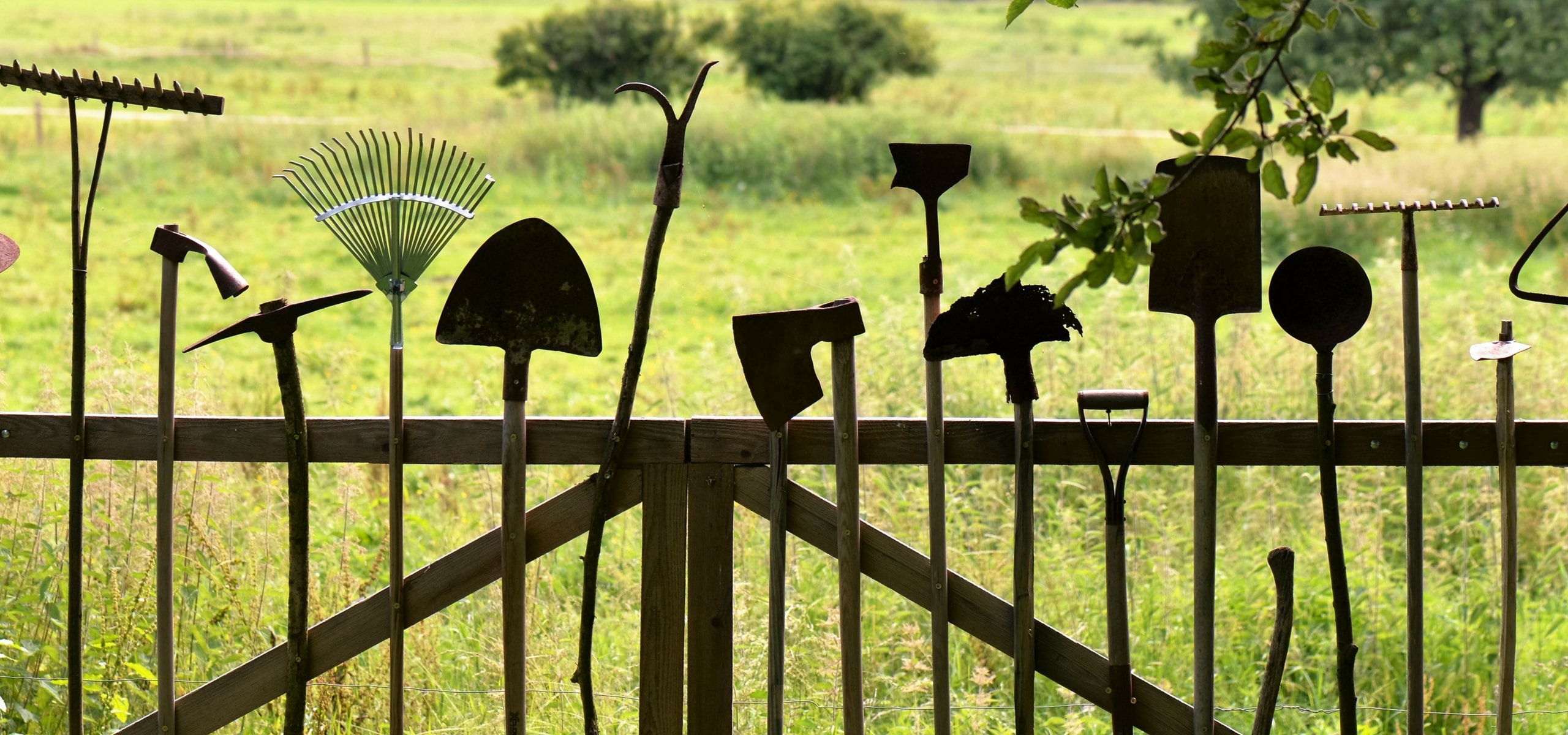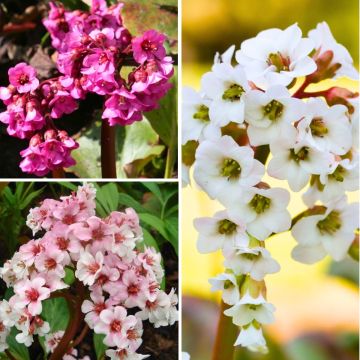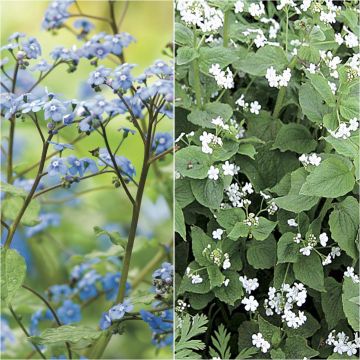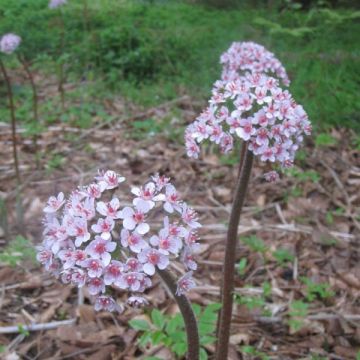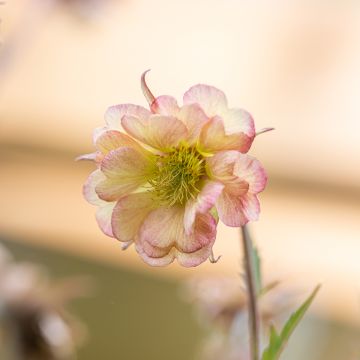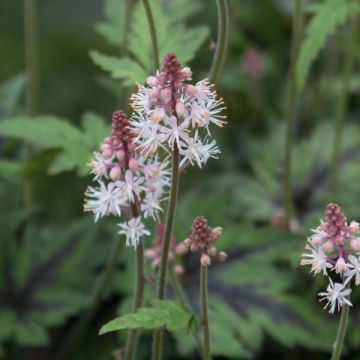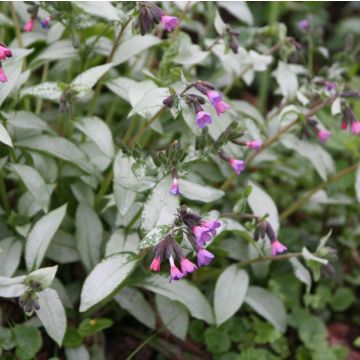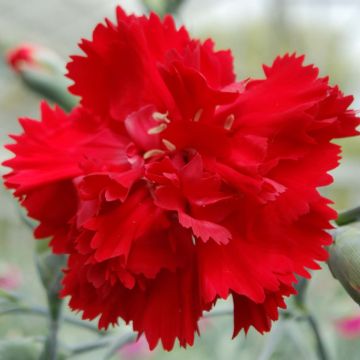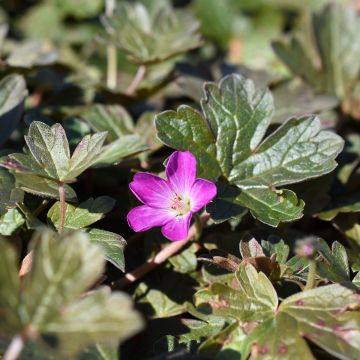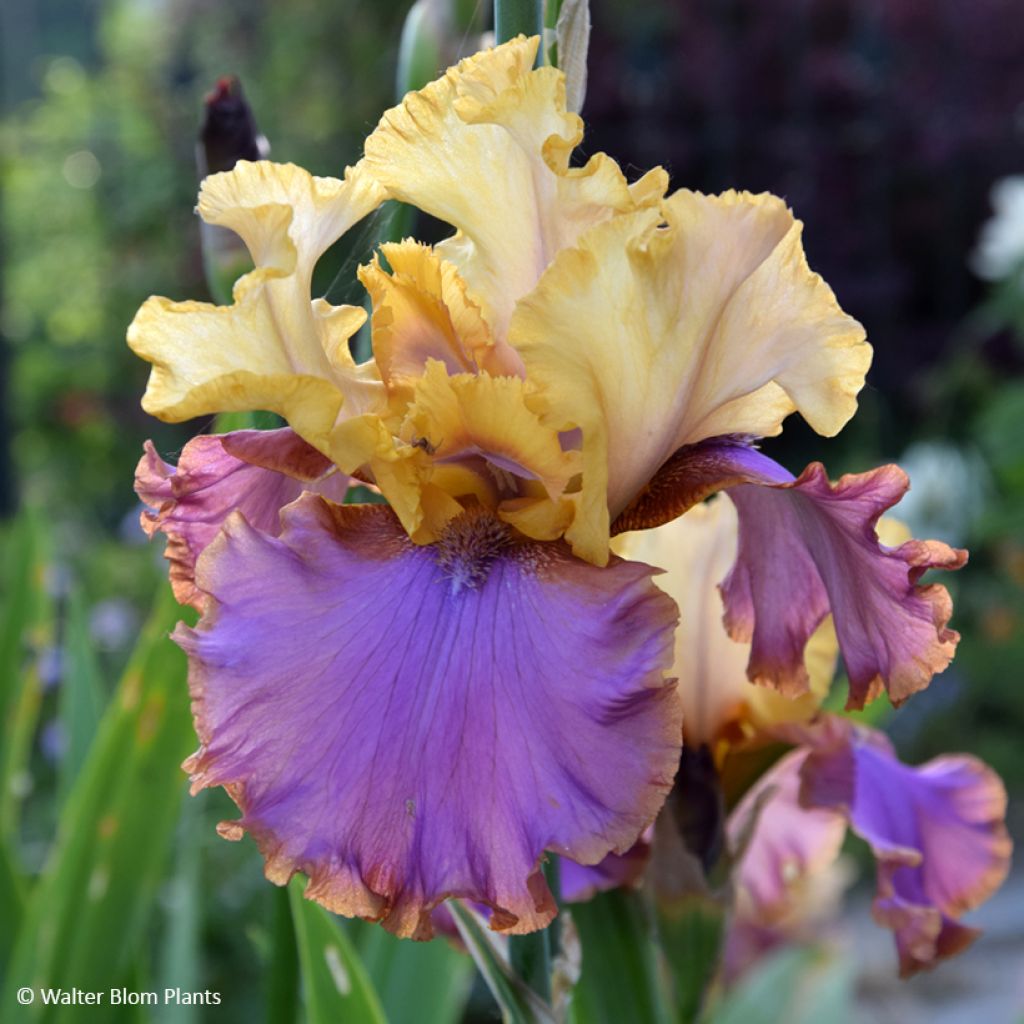

Iris Au Sommet - Tall bearded iris
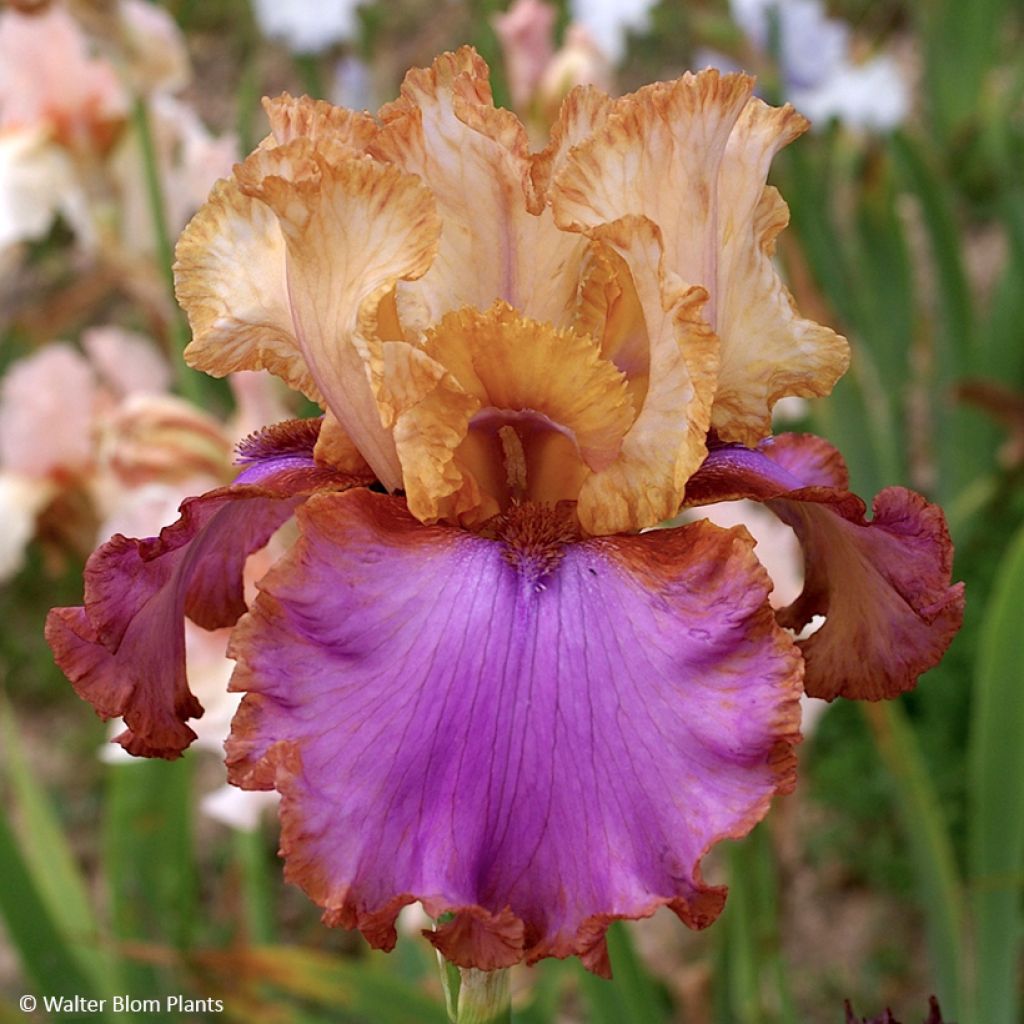

Iris Au Sommet - Tall bearded iris
Iris germanica Au Sommet - Tall bearded iris
Iris germanica Au Sommet
German Iris, Bearded Iris
Special offer!
Receive a €20 voucher for any order over €90 (excluding delivery costs, credit notes, and plastic-free options)!
1- Add your favorite plants to your cart.
2- Once you have reached €90, confirm your order (you can even choose the delivery date!).
3- As soon as your order is shipped, you will receive an email containing your voucher code, valid for 3 months (90 days).
Your voucher is unique and can only be used once, for any order with a minimum value of €20, excluding delivery costs.
Can be combined with other current offers, non-divisible and non-refundable.
Home or relay delivery (depending on size and destination)
Schedule delivery date,
and select date in basket
This plant carries a 12 months recovery warranty
More information
We guarantee the quality of our plants for a full growing cycle, and will replace at our expense any plant that fails to recover under normal climatic and planting conditions.
Would this plant suit my garden?
Set up your Plantfit profile →
Description
Iris germanica 'Au Sommet' is a very vigorous and floriferous variety of Bearded Iris. From mid-May, long flowering stems emerge, bearing large, strikingly architectural and colourful flowers. The pale coppery yellow petals stand upright, while the gracefully drooping horizontal sepals are somewhere between magenta and amethyst. A truly superb variety!
Irises belong to and give their name to the Iridaceae family, which includes dozens of plant genera ranging from temperate to tropical regions. Iris germanica, native to Syria, is the ancestor of modern Bearded Irises. These result from numerous successive cross-breedings to continually produce new colours or colour combinations. They are rhizomatous irises, as opposed to bulbous irises like the Dutch Iris.
'Au Sommet' is a variety bred by the French hybridiser Cayeux, developed in 2013 and released the following year. This cultivar is the result of cross-breeding two horticultural varieties, 'Jazz Festival' and 'Enchanting'.
Iris 'Au Sommet' is notable for its impressive height, reaching up to 1.10m when in full bloom. Its sturdy flower stems hold up well against the wind. It forms a clump around 50cm wide, or even more over time. This robust variety produces long, sword-shaped, ribbon-like leaves that taper gradually to a point, in a beautiful glaucous green. The foliage overlaps to form large fans. It is late-flowering, it blooms between mid-May and late June in average climates, a little earlier in mild climates and later in colder regions. The large flowers (around 13cm) are composed of three petals and three sepals. The upright petals are a pale coppery yellow with a more pronounced border. The sepals extend horizontally before gracefully curving downward. Their colour is a magenta that shifts to amethyst towards the centre, while a coppery border a few millimetres wide accentuates the petals' wavy edges. The "beard", located in the middle section towards the corolla's centre, is copper-coloured. Flowering lasts approximately three weeks, slightly less in poor weather. If spent flowers are not removed, large green, rugby-ball-shaped seed pods form, though it's best to deadhead to prevent the plant from expending unnecessary energy.
Iris 'Au Sommet' will look stunning in a mixed border. Its beautiful flowering period is relatively short, and the plant isn't particularly attractive after this dazzling display. Pair it with other perennial plants or bushes to extend the visual interest. Daylilies will reward you with their ephemeral but continuously renewed blooms over several months. Red Hot Pokers (Kniphofias) with their vibrant spikes also make excellent companions for a sunny, colourful display. In the background, add ornamental-leaved bushes like Smoke Bushes, which also offer delicate, airy flowers. Ensure your Irises remain easily accessible, as they will need dividing every three to four years.
Iris germanica Au Sommet - Tall bearded iris in pictures


Flowering
Foliage
Plant habit
Botanical data
Iris
germanica
Au Sommet
Iridaceae
German Iris, Bearded Iris
Cultivar or hybrid
Other German Iris - Bearded Iris
View all →Planting and care
Iris 'Au Sommet' requires a very sunny location, even quite dry in summer.
In the shade, irises will grow but will not flower. They can be cultivated in all regions. Being hardy, they do not need winter protection. Well-drained soil is perfect, even if it is rather dry and chalky, or even stony. Overly moist soil encourages rhizome rot. Plant from July to September. This allows the rhizomes enough time to grow sufficiently before lifting, and then to develop new roots before winter. They should be planted immediately after purchase for the best results. Plan to divide irises approximately every four years to provide them with fresh soil and because the clumps thin out from the inside over time. Divide in summer during the dormant period by lifting the clumps with a garden fork and selecting the finest rhizomes (discard the smaller ones).
Irises have vigorous growth and require space to develop and flower well, especially this 'Au Sommet' variety. They should be planted with spacing appropriate to the size and vigour of the variety: in the case of this variety, approximately 45-50 cm (5 to 8 plants per square metre). Always consider the direction of rhizome growth by arranging them in a star shape, with buds and leaves facing outward, and spacing them well away from other varieties to allow room for development.
Planting
Dig a hole wide and deep enough. Create a conical mound of soil in the hole on which to place the rhizome with the roots spread out. Cover the roots. It is important that the rhizome sits just at the soil surface. It should not be planted in a depression (risk of rot). Allow for soil settling and the iris sinking. In clay or moist ground, the rhizome should even be slightly raised on a small mound a few centimetres high. To help the soil cling to the roots, lightly firm the soil and water generously immediately after planting. Water as needed 2-3 times until established.
Maintenance:
Keep the soil free of weeds by shallow hoeing, taking care not to damage the rhizomes or roots. Weeds shade the irises, retain moisture (leading to rot) and attract slugs. Similarly, remove dry leaves. If they are diseased (reddish-edged spots from heterosporiosis), we recommend burning them. Remove faded flowers to prevent the iris from wasting energy unnecessarily on producing fruit.
Planting period
Intended location
Care
Planting & care advice
This item has not been reviewed yet - be the first to leave a review about it.
Similar products
Haven't found what you were looking for?
Hardiness is the lowest winter temperature a plant can endure without suffering serious damage or even dying. However, hardiness is affected by location (a sheltered area, such as a patio), protection (winter cover) and soil type (hardiness is improved by well-drained soil).

Photo Sharing Terms & Conditions
In order to encourage gardeners to interact and share their experiences, Promesse de fleurs offers various media enabling content to be uploaded onto its Site - in particular via the ‘Photo sharing’ module.
The User agrees to refrain from:
- Posting any content that is illegal, prejudicial, insulting, racist, inciteful to hatred, revisionist, contrary to public decency, that infringes on privacy or on the privacy rights of third parties, in particular the publicity rights of persons and goods, intellectual property rights, or the right to privacy.
- Submitting content on behalf of a third party;
- Impersonate the identity of a third party and/or publish any personal information about a third party;
In general, the User undertakes to refrain from any unethical behaviour.
All Content (in particular text, comments, files, images, photos, videos, creative works, etc.), which may be subject to property or intellectual property rights, image or other private rights, shall remain the property of the User, subject to the limited rights granted by the terms of the licence granted by Promesse de fleurs as stated below. Users are at liberty to publish or not to publish such Content on the Site, notably via the ‘Photo Sharing’ facility, and accept that this Content shall be made public and freely accessible, notably on the Internet.
Users further acknowledge, undertake to have ,and guarantee that they hold all necessary rights and permissions to publish such material on the Site, in particular with regard to the legislation in force pertaining to any privacy, property, intellectual property, image, or contractual rights, or rights of any other nature. By publishing such Content on the Site, Users acknowledge accepting full liability as publishers of the Content within the meaning of the law, and grant Promesse de fleurs, free of charge, an inclusive, worldwide licence for the said Content for the entire duration of its publication, including all reproduction, representation, up/downloading, displaying, performing, transmission, and storage rights.
Users also grant permission for their name to be linked to the Content and accept that this link may not always be made available.
By engaging in posting material, Users consent to their Content becoming automatically accessible on the Internet, in particular on other sites and/or blogs and/or web pages of the Promesse de fleurs site, including in particular social pages and the Promesse de fleurs catalogue.
Users may secure the removal of entrusted content free of charge by issuing a simple request via our contact form.
The flowering period indicated on our website applies to countries and regions located in USDA zone 8 (France, the United Kingdom, Ireland, the Netherlands, etc.)
It will vary according to where you live:
- In zones 9 to 10 (Italy, Spain, Greece, etc.), flowering will occur about 2 to 4 weeks earlier.
- In zones 6 to 7 (Germany, Poland, Slovenia, and lower mountainous regions), flowering will be delayed by 2 to 3 weeks.
- In zone 5 (Central Europe, Scandinavia), blooming will be delayed by 3 to 5 weeks.
In temperate climates, pruning of spring-flowering shrubs (forsythia, spireas, etc.) should be done just after flowering.
Pruning of summer-flowering shrubs (Indian Lilac, Perovskia, etc.) can be done in winter or spring.
In cold regions as well as with frost-sensitive plants, avoid pruning too early when severe frosts may still occur.
The planting period indicated on our website applies to countries and regions located in USDA zone 8 (France, United Kingdom, Ireland, Netherlands).
It will vary according to where you live:
- In Mediterranean zones (Marseille, Madrid, Milan, etc.), autumn and winter are the best planting periods.
- In continental zones (Strasbourg, Munich, Vienna, etc.), delay planting by 2 to 3 weeks in spring and bring it forward by 2 to 4 weeks in autumn.
- In mountainous regions (the Alps, Pyrenees, Carpathians, etc.), it is best to plant in late spring (May-June) or late summer (August-September).
The harvesting period indicated on our website applies to countries and regions in USDA zone 8 (France, England, Ireland, the Netherlands).
In colder areas (Scandinavia, Poland, Austria...) fruit and vegetable harvests are likely to be delayed by 3-4 weeks.
In warmer areas (Italy, Spain, Greece, etc.), harvesting will probably take place earlier, depending on weather conditions.
The sowing periods indicated on our website apply to countries and regions within USDA Zone 8 (France, UK, Ireland, Netherlands).
In colder areas (Scandinavia, Poland, Austria...), delay any outdoor sowing by 3-4 weeks, or sow under glass.
In warmer climes (Italy, Spain, Greece, etc.), bring outdoor sowing forward by a few weeks.


































